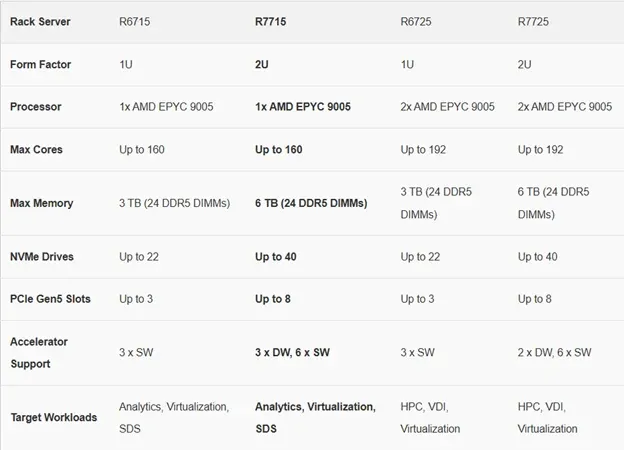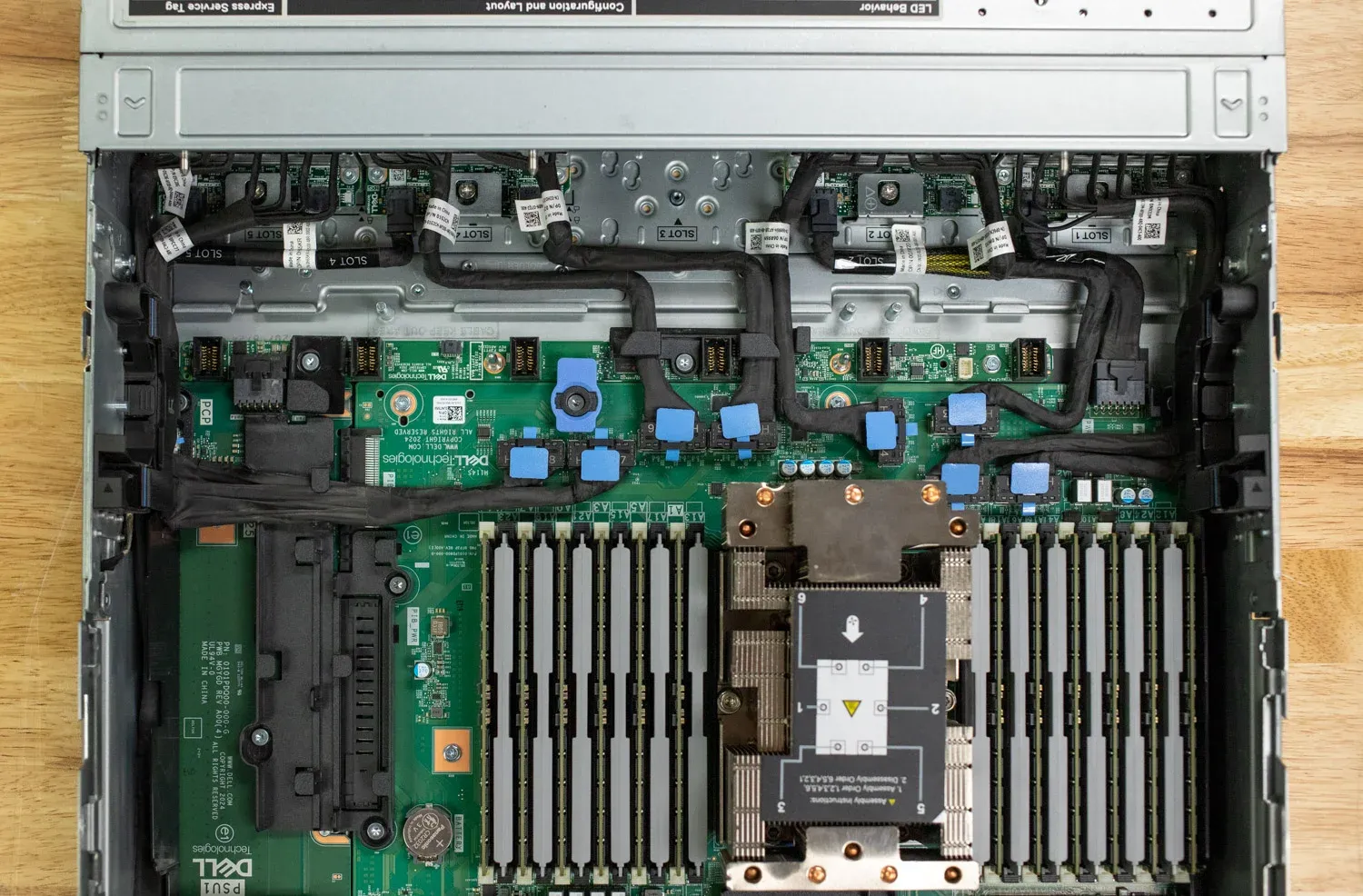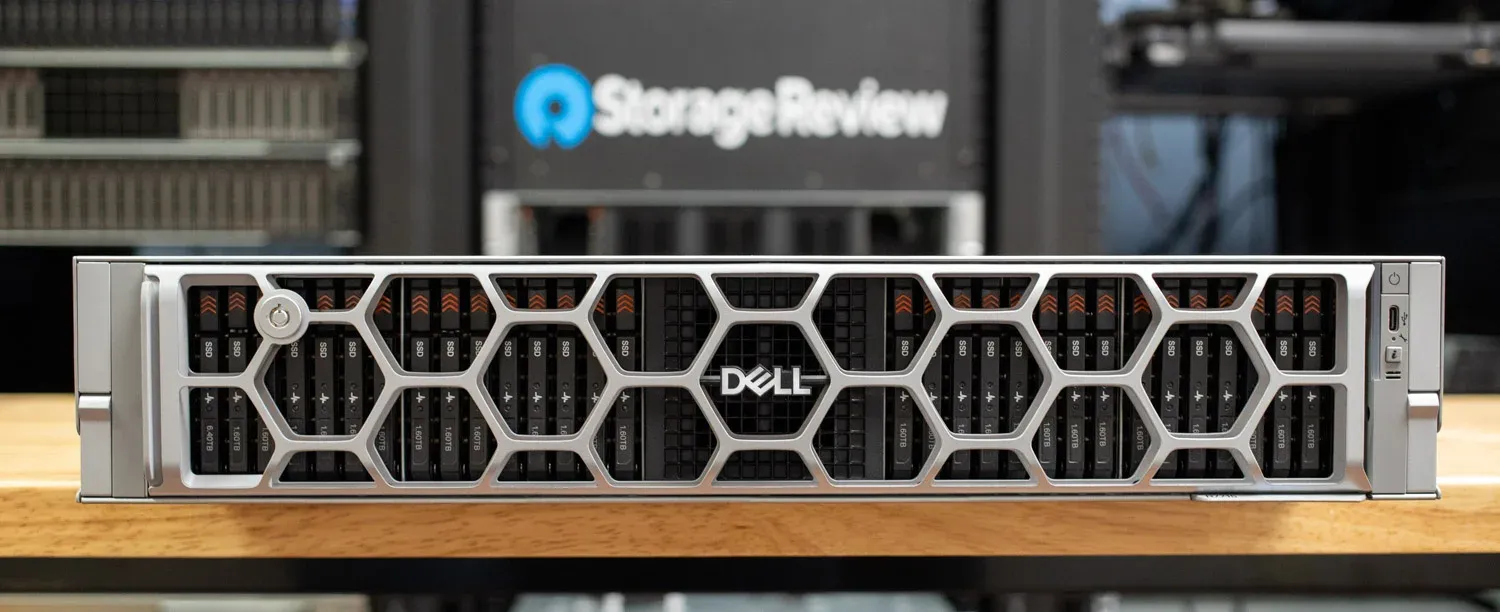The Dell PowerEdge R7715 is a well-calibrated beast — built for enterprise performance, designed for flexibility, and engineered with precision to handle a broad spectrum of data-driven workloads.
From its Zen5 EPYC core to PCIe Gen5 support and up to 6TB of DDR5 memory, this 2U single-socket server brings serious power to mainstream virtualization, analytics, and storage environments — without crossing into dual-socket territory.
Dell’s AMD Portfolio

Positioned between the entry-level R6715 and the compute-heavy R7725, the R7715 strikes an impressive balance. It’s a single-socket system that doesn’t skimp on performance or expandability.
With support for AMD EPYC 9005 series CPUs offering up to 160 cores and 12 memory channels, it effectively handles modern enterprise demands with a power-efficient profile.
Compared to the more compact 1U R6715, the R7715 doubles down on memory (6TB vs. 3TB max) and offers more generous PCIe and NVMe configuration options.
On the other end, while the R7725 scales further with dual sockets and higher total cores, it also comes with a larger power and cost footprint.
For organizations that want performance headroom without going overboard, the R7715 sits right in the sweet spot.
Storage Options That Scale With You
-
Dell has clearly put thought into making the R7715 adaptable to a variety of storage needs.
-
Supports a wide range of storage configurations — from minimal U.2 NVMe SSDs to full EDSFF Gen5 NVMe arrays.
-
Offers options from 8x E3.S NVMe drives up to 40-drive configurations (some arriving in 2025).
-
Designed to handle both conservative setups and high-performance, storage-dense environments.
-
Uses x2 link widths for Gen5 SSDs in denser builds to avoid using PCIe switches — a smart move to reduce complexity and heat.
-
Does not support Tri-Mode RAID, which keeps things simple but reinforces its focus on high-performance NVMe workloads instead of mixed storage roles.
Flexible PCIe Expansion for Every Scenario

The R7715 is no slouch when it comes to PCIe expandability. It supports multiple riser layouts that can be tailored to your needs — from basic dual-slot setups to high-density 6 x16 configurations, and even specialized layouts for GPU or liquid-cooled environments.
Need to add a couple of high-speed NICs? Done.
Want to fit in multiple GPUs, FPGAs, or accelerators for ML or HPC tasks? The chassis and risers have room — and airflow — to support it.
There’s even a hybrid riser option that mixes x16 and x8 slots, perfect for environments where you’re balancing high-bandwidth devices with auxiliary cards like TPMs or SmartNICs. It’s flexible, modular, and clearly built with future needs in mind.
Memory Bandwidth and Power Efficiency
-
Supports up to 24 DDR5 DIMM slots for a maximum of 6TB ECC memory.
-
Memory speeds up to 5200 MT/s, ideal for memory-heavy workloads like databases, analytics, and virtualization.
-
Offers a wide range of redundant PSU options from 800W to 3200W.
-
Includes Titanium-rated high-efficiency units for energy-conscious environments.
-
Supports HVDC and DC power options for flexible deployment in modern data centers.
It’s a level of granularity that enterprise IT teams will appreciate — especially when optimizing for redundancy, thermal envelope, or power efficiency.
Boost with iDRAC10
No server review is complete without a nod to manageability — and Dell delivers here too.
The iDRAC10 controller brings a sleeker UI, advanced Root-of-Trust security, and centralized AC power recovery directly under iDRAC’s domain.
Combined with role-based access controls and a unified licensing structure across PowerEdge 17G, it’s a big step toward simplifying remote server management at scale.
Versatile Workhorse
The Dell PowerEdge R7715 isn’t trying to be the biggest or the most extreme server in Dell’s lineup — and that’s exactly why it works so well.
It’s a versatile, power-efficient, and intelligently designed platform that delivers impressive compute and I/O capabilities without overcomplicating your rack space or power bill.
Whether you’re building out a dense virtualization cluster, modernizing your data infrastructure, or architecting a scalable software-defined storage environment, the R7715 is ready to rise to the challenge — and then some.







